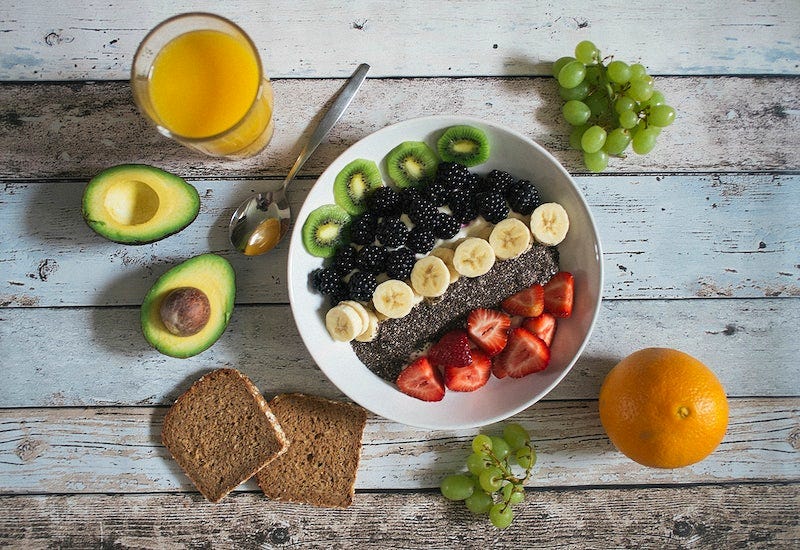Your Cart is Empty
FREE Worldwide Shipping! | +1 365 654 6605
FREE Worldwide Shipping! | +1 365 654 6605
December 13, 2023 5 min read

Using a vegetable spiralizer adds a fun and creative twist to your meal preparation. It allows you to experiment with different types of vegetables, turning them into enticing and visually appealing dishes. By replacing traditional pasta with vegetable noodles, you can easily increase your vegetable intake and add more nutrients to your diet. For those following a low-carb or ketogenic diet, vegetable spiralizers offer a fantastic alternative to traditional pasta and noodles. By using vegetables such as zucchini, butternut squash, or sweet potatoes, you can create low-carb versions of your favorite pasta dishes, reducing your carbohydrate intake while still enjoying delicious flavors. Vegetable spiralizers provide a versatile approach to meal preparation. You can use spiralized vegetables in a variety of dishes, including stir-fries, salads, soups, and even desserts. The options are endless, allowing you to experiment and create new and exciting recipes. When it comes to selecting a vegetable spiralizer, there are several factors to consider. Here are some key points to keep in mind: There are several types of vegetable spiralizers available on the market. The most common options include handheld spiralizers, tabletop spiralizers, and attachments for stand mixers. Each type has its own advantages and limitations, so it's important to choose the one that best suits your needs and preferences. Different vegetable spiralizers offer various blade options, allowing you to create different types of noodles or cuts. Most spiralizers come with blades for thin noodles, thick noodles, and ribbon cuts. Some models may offer additional blade options for more variety. Consider the types of dishes you want to create and choose a spiralizer with blades that meet your requirements. Look for a vegetable spiralizer that is sturdy and easy to use. It should be made of high-quality materials that can withstand regular use. Additionally, consider the ease of assembly, cleaning, and storage. A spiralizer that is easy to clean and doesn't take up too much space in your kitchen will greatly enhance your overall experience. Now that you have chosen the perfect vegetable spiralizer for your needs, it's time to learn how to spiralize your favorite vegetables. Here is a step-by-step guide: Start by washing your vegetable thoroughly. If necessary, peel the vegetable and trim both ends to create a flat base. This will ensure stability during the spiralizing process. Most vegetable spiralizers come with different blade options. Select the blade that will create the desired noodle shape or cut for your recipe. Refer to the manufacturer's guide for assistance in choosing the appropriate blade. Attach the vegetable securely to the spiralizer. Follow the instructions provided by the manufacturer to ensure proper placement and stability. This will prevent any mishaps during the spiralizing process. Once everything is set up, start turning the handle or operating the machine according to the manufacturer's instructions. Apply gentle pressure and let the spiralizer do the work. Take your time and enjoy the process. Before you know it, you will have a bowl full of beautiful vegetable noodles. If the length of the vegetable noodles is too long for your recipe, use a sharp knife to trim them to the desired length. This is particularly useful when preparing salads or other dishes where shorter noodles are preferred. Now that you have mastered the art of spiralizing, it's time to put your skills to use with some delicious low-carb recipes. Here are ten mouth-watering recipes to get you started: This classic recipe combines fresh zucchini noodles with a flavorful tomato and basil sauce. It's a light and refreshing dish that is perfect for a quick and healthy meal. This hearty stir-fry combines spiralized butternut squash noodles with tender chicken and a flavorful sauce. It's a satisfying and nutritious meal that will leave you feeling satisfied. This vibrant dish combines spiralized sweet potato noodles with sautéed spinach and tangy feta cheese. It's a flavorful and satisfying vegetarian option that is sure to please.
In today's health-conscious world, finding delicious and nutritious alternatives to traditional high-carb dishes has become a top priority for many. One popular tool that has gained significant popularity is the vegetable spiralizer. With a vegetable spiralizer, you can transform everyday vegetables into low-carb noodles, creating a wide range of dishes that are both satisfying and nutritious. In this comprehensive guide, we will explore the benefits of vegetable spiralizers, how to use them effectively, and provide you with a variety of low-carb recipes to try.
Benefits of Vegetable Spiralizers
1. A Fun and Creative Way to Increase Vegetable Intake
2. A Low-Carb Alternative to Pasta and Noodles
3. Versatility in Meal Preparation
Choosing the Right Vegetable Spiralizer
1. Types of Vegetable Spiralizers
2. Blade Options
3. Durability and Ease of Use
How to Spiralize with a Vegetable Spiralizer
1. Prepare Your Vegetable
2. Choose the Right Blade
3. Secure the Vegetable
4. Spiralize!
5. Trim if Necessary
Vegetable Spiralizer Recipes
1. Zucchini Noodles with Tomato and Basil
Ingredients:
Instructions:
2. Butternut Squash Noodle Stir-Fry with Chicken
Ingredients:
Instructions:
3. Sweet Potato Noodles with Spinach and Feta Cheese
Ingredients:
Instructions:
References
Be the first to know about upcoming sales and promos. Get a 10% discount coupon when you subscribe!